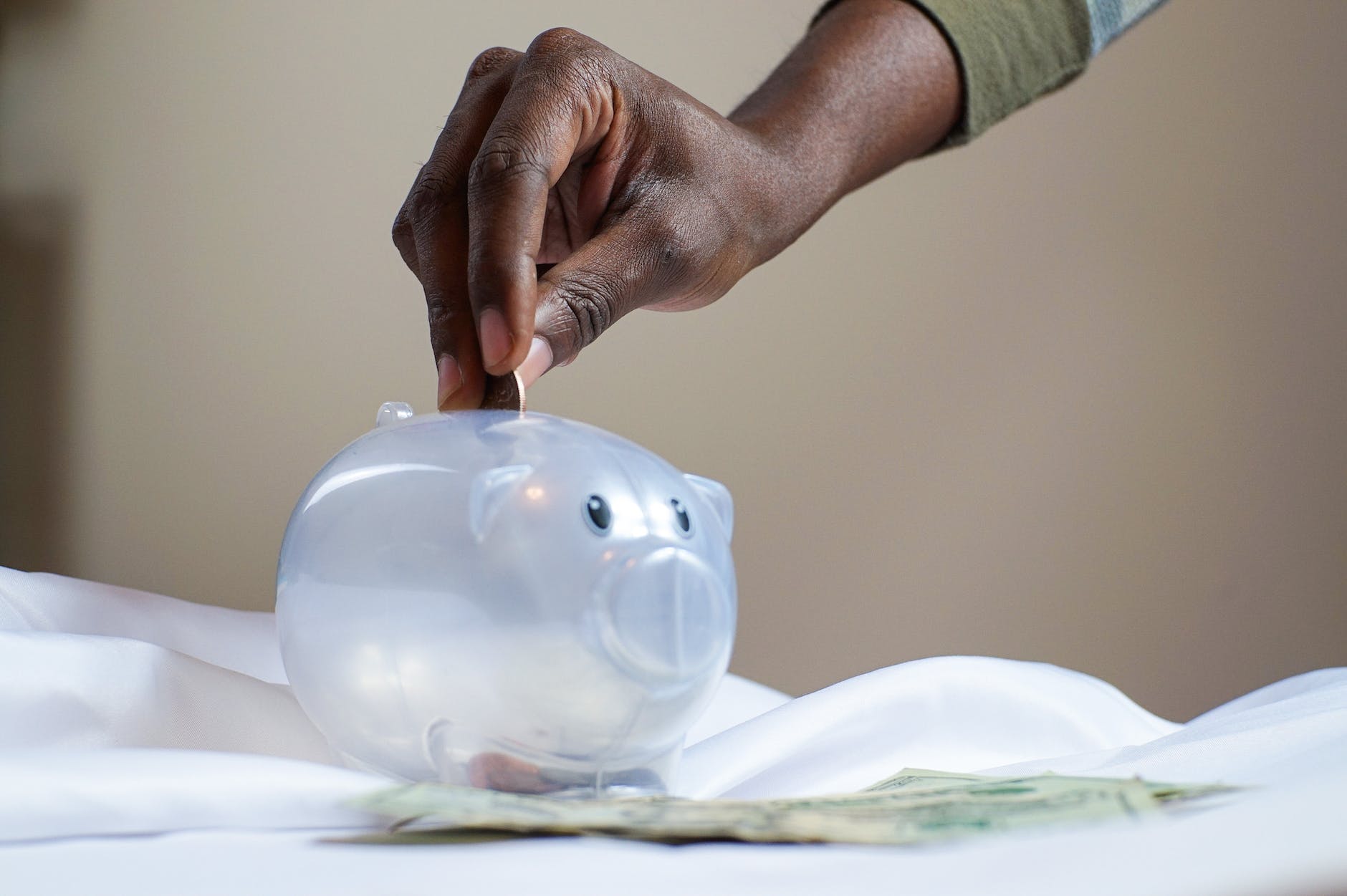Introduction
In today’s unpredictable world, having a solid emergency fund is more important than ever. Whether it’s unexpected medical bills, a sudden job loss, or a major home repair, life has a way of throwing curveballs when we least expect it. That’s why it’s crucial to be prepared. But building an emergency fund is not just about setting aside money. It requires careful planning, discipline, and a solid understanding of the steps, tips, and strategies that can help you achieve your financial goals. In this ultimate guide, we will delve into the nitty-gritty details of building an emergency fund. From determining your savings goals to finding the right savings account, we will cover everything you need to know to create a safety net that will provide you with peace of mind and financial stability. So, if you’re ready to take control of your finances and build a secure future, let’s get started on this journey together.
Why is an emergency fund important?
Having an emergency fund is crucial for several reasons. Firstly, it provides a safety net in case of unexpected financial emergencies. Life can throw unexpected challenges our way, such as sudden job loss, medical emergencies, or major home repairs. Without an emergency fund, individuals may find themselves resorting to credit cards or loans, which can lead to debt and financial instability. By having an emergency fund, you can cover these unexpected expenses without resorting to borrowing money.
Secondly, an emergency fund provides peace of mind. Knowing that you have a financial cushion to fall back on in times of crisis can alleviate the stress and anxiety that often accompany unexpected financial challenges. With an emergency fund, you can face these challenges head-on, confident in your ability to handle them without significant disruption to your life.
Lastly, having an emergency fund can prevent you from derailing your long-term financial goals. Without a safety net, unexpected expenses can force you to dip into your savings or retirement accounts, delaying your progress towards important milestones, such as buying a home or retiring comfortably. An emergency fund ensures that you can handle unforeseen circumstances while staying on track with your long-term financial plans.
How much should you have in your emergency fund?
Determining the appropriate amount to save in your emergency fund depends on several factors, including your monthly expenses, income stability, and risk tolerance. As a general rule of thumb, financial experts suggest having at least three to six months’ worth of living expenses in your emergency fund. However, this amount may vary depending on your unique circumstances.
To calculate your specific emergency fund goal, start by listing all your essential monthly expenses, including rent or mortgage payments, utilities, groceries, transportation, and insurance. Multiply this total by the number of months you want to cover (e.g., three or six months) to determine your target amount. Keep in mind that if you have dependents or work in an industry with higher job instability, you may want to aim for a larger emergency fund to provide an extra layer of security.
Determining your emergency fund timeline
Once you have a target amount in mind, it’s essential to establish a timeline for building your emergency fund. Setting clear goals and deadlines can help you stay motivated and track your progress. Consider your income, expenses, and savings capacity to determine how much you can realistically save each month.
If you have a steady income and can allocate a significant portion of your earnings to your emergency fund, you may be able to reach your goal within a shorter time frame. On the other hand, if your income is more variable or you have other financial obligations, it may take longer to build your emergency fund. The key is to be consistent and persistent in your savings efforts, regardless of the timeline.
To stay on track, consider creating a monthly budget that outlines how much you can save each month towards your emergency fund. Automating your savings by setting up automatic transfers from your checking account to your emergency fund can also help ensure that you consistently contribute to your savings goal.
Steps to building an emergency fund
Now that you understand the importance of an emergency fund and have determined your savings goal and timeline, let’s dive into the steps you can take to build your emergency fund effectively.
- Assess your current financial situation: Before you start saving, take a close look at your income, expenses, and debts. Understanding your financial standing will help you identify areas where you can cut back on spending and allocate more towards your emergency fund.
- Create a budget: A budget is a crucial tool for managing your finances and ensuring that you are saving enough for your emergency fund. Track your income and expenses, and allocate a specific amount each month towards your savings goal.
- Reduce unnecessary expenses: Take a closer look at your monthly expenses and identify areas where you can cut back. This could include dining out less frequently, canceling unused subscriptions, or finding more affordable alternatives for certain services or products.
- Increase your income: If possible, consider finding ways to increase your income to accelerate your savings. This could involve taking on a side gig, freelancing, or asking for a raise at work. Every additional dollar you earn can contribute towards building your emergency fund.
- Save aggressively: Once you have assessed your financial situation, created a budget, and reduced unnecessary expenses, it’s time to save aggressively. Make it a priority to set aside a specific amount each month towards your emergency fund. Consider cutting back on non-essential expenses and redirecting those funds towards your savings.
- Stay committed: Building an emergency fund requires discipline and consistency. It’s important to stay committed to your savings goals, even when faced with temptations to spend. Remind yourself of the importance of having a financial safety net and the long-term benefits of building an emergency fund.
By following these steps and staying dedicated to your savings goals, you will be well on your way to building a robust emergency fund that can provide you with financial security and peace of mind.
Tips for saving money for your emergency fund
Saving money for your emergency fund can sometimes feel challenging, especially if you’re on a tight budget or have competing financial priorities. However, with the right strategies and mindset, you can make significant progress towards your savings goals. Here are some tips to help you save more effectively:
- Automate your savings: Set up automatic transfers from your checking account to your emergency fund on a regular basis. By automating your savings, you remove the temptation to spend the money elsewhere and ensure that you consistently contribute to your emergency fund.
- Cut back on non-essential expenses: Take a closer look at your monthly expenses and identify areas where you can cut back. This could include reducing dining out, entertainment expenses, or discretionary shopping. Redirect the money saved towards your emergency fund.
- Shop smart: When making essential purchases, be mindful of finding the best deals and discounts. Compare prices, use coupons, and consider buying in bulk to save money. Small savings in your everyday expenses can add up over time and contribute to your emergency fund.
- Prioritize your savings: Treat your emergency fund savings as a non-negotiable expense. Make it a priority to set aside a specific amount each month, just like you would with your rent or mortgage payment. By prioritizing your savings, you ensure that you consistently contribute towards building your emergency fund.
- Earn extra income: Look for opportunities to earn additional income outside of your regular job. This could involve taking on a part-time job, freelancing, or monetizing a hobby or skill. Every extra dollar earned can be allocated towards your emergency fund and expedite your savings progress.
- Use windfalls wisely: If you receive unexpected money, such as a tax refund or a work bonus, resist the urge to splurge. Instead, use these windfalls to boost your emergency fund. While it’s okay to treat yourself occasionally, prioritizing your savings will help you achieve your financial goals faster.
By implementing these tips and incorporating them into your savings routine, you can accelerate your progress towards building an emergency fund and establish healthy financial habits that will serve you well in the long run.
Strategies for maximizing your emergency fund growth
Building an emergency fund is not only about saving money; it’s also about ensuring that your savings grow over time. Here are some strategies to help maximize the growth of your emergency fund:
- Choose the right savings account: Look for a savings account that offers competitive interest rates and low fees. Consider online banks, which often provide higher interest rates compared to traditional banks. A high-yield savings account can help your emergency fund grow faster through interest earnings.
- Take advantage of compound interest: Compound interest is the interest earned on both the initial savings and the accumulated interest. By leaving your emergency fund untouched, you can benefit from compound interest and watch your savings grow exponentially over time.
- Explore other investment options: Depending on your risk tolerance and financial goals, you may consider investing a portion of your emergency fund in low-risk investment vehicles, such as government bonds or certificates of deposit (CDs). While these options may offer higher returns, they also come with some level of risk, so do thorough research and consult with a financial advisor before making any investment decisions.
- Review and adjust your savings regularly: As your financial circumstances change, it’s important to review and adjust your savings strategy accordingly. Revisit your emergency fund goals, evaluate your progress, and make any necessary adjustments to ensure that your savings are aligned with your current situation.
- Avoid unnecessary withdrawals: While your emergency fund is meant to be used for unexpected expenses, it’s crucial to avoid unnecessary withdrawals. Before dipping into your emergency fund, evaluate whether the expense is truly an emergency or if there are alternative solutions. By avoiding unnecessary withdrawals, you can preserve your emergency fund and maintain its growth potential.
By implementing these strategies, you can ensure that your emergency fund not only serves as a safety net but also grows over time, providing you with even more financial security.
Where to keep your emergency fund
Once you have started building your emergency fund, it’s important to choose the right place to keep your savings. Here are some options to consider:
- Savings account: A traditional savings account is a popular choice for storing emergency funds. Look for an account that offers competitive interest rates and easy accessibility. Online savings accounts, in particular, often offer higher interest rates compared to brick-and-mortar banks.
- High-yield savings account: A high-yield savings account is similar to a traditional savings account but typically offers higher interest rates. These accounts are usually offered by online banks and can help your emergency fund grow faster through interest earnings.
- Money market account: Money market accounts combine the features of a savings account and a checking account. They typically offer higher interest rates than regular savings accounts and may also provide check-writing capabilities. Money market accounts are suitable for individuals who want easy access to their emergency funds while earning a higher interest rate.
- Certificates of deposit (CDs): CDs are time deposits with fixed terms and fixed interest rates. By locking your money into a CD, you may be able to earn higher interest rates compared to savings accounts. However, keep in mind that CDs have penalties for early withdrawals, so ensure that you won’t need immediate access to your emergency funds before choosing this option.
When choosing where to keep your emergency fund, consider factors such as interest rates, fees, accessibility, and your personal preferences. It’s important to strike a balance between earning a competitive return on your savings and having easy access to the funds when you need them.
How to use your emergency fund wisely
Having an emergency fund is essential, but it’s equally important to use it wisely when the need arises. Here are some guidelines for using your emergency fund effectively:
- Evaluate the situation: Before accessing your emergency fund, evaluate whether the expense truly qualifies as an emergency. Ask yourself if there are alternative solutions or if the expense can be delayed or reduced. It’s important to preserve your emergency fund for genuine emergencies.
- Cover necessary expenses: Use your emergency fund to cover necessary expenses that cannot be postponed or eliminated. This could include unexpected medical bills, major car repairs, or essential home repairs.
- Avoid unnecessary spending: While it may be tempting to dip into your emergency fund for non-essential expenses, it’s crucial to resist the urge. Using your emergency fund for discretionary purchases can deplete your savings and leave you vulnerable in case of a genuine emergency.
- Replenish your emergency fund: After using your emergency fund, make it a priority to replenish the amount withdrawn. Adjust your savings strategy and allocate a portion of your income towards rebuilding your emergency fund as soon as possible.
By following these guidelines, you can ensure that your emergency fund serves its intended purpose and continues to provide you with financial security in times of need.
Common mistakes to avoid when building an emergency fund
Building an emergency fund is not without its challenges, and there are common mistakes that individuals often make along the way. By being aware of these pitfalls, you can avoid them and stay on track towards building a robust emergency fund. Here are some common mistakes to watch out for:
- Not starting early: One of the biggest mistakes is delaying the start of building an emergency fund. The earlier you start, the more time your savings have to grow. Don’t wait for a crisis to strike before taking action.
- Underestimating your savings goal: It’s important to set a realistic savings goal based on your monthly expenses and financial situation. Underestimating your goal may leave you underprepared for emergencies, while overestimating it may make it difficult to stay motivated.
- Neglecting to track expenses: Failing to track your expenses can lead to overspending and hinder your savings progress. Regularly review your budget, track your spending, and make adjustments as needed.
- Using credit cards as an emergency fund: Relying on credit cards instead of having a dedicated emergency fund can lead to debt and financial instability. While credit cards can be used as a temporary solution, they should not be your primary safety net.
- Not adjusting your savings strategy: As your financial situation changes, it’s important to adjust your savings strategy accordingly. Failing to do so may result in inadequate savings or missed opportunities for growth.
- Dipping into your emergency fund for non-emergencies: It’s crucial to distinguish between genuine emergencies and non-essential expenses. Using your emergency fund for discretionary spending can deplete your savings and hinder your financial security.
By being aware of these mistakes and taking











